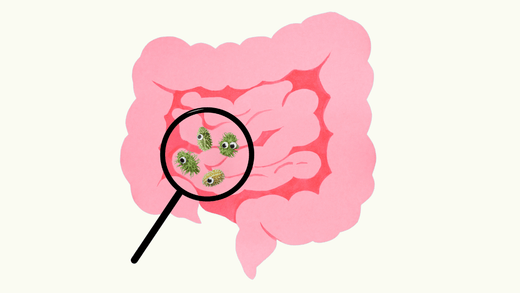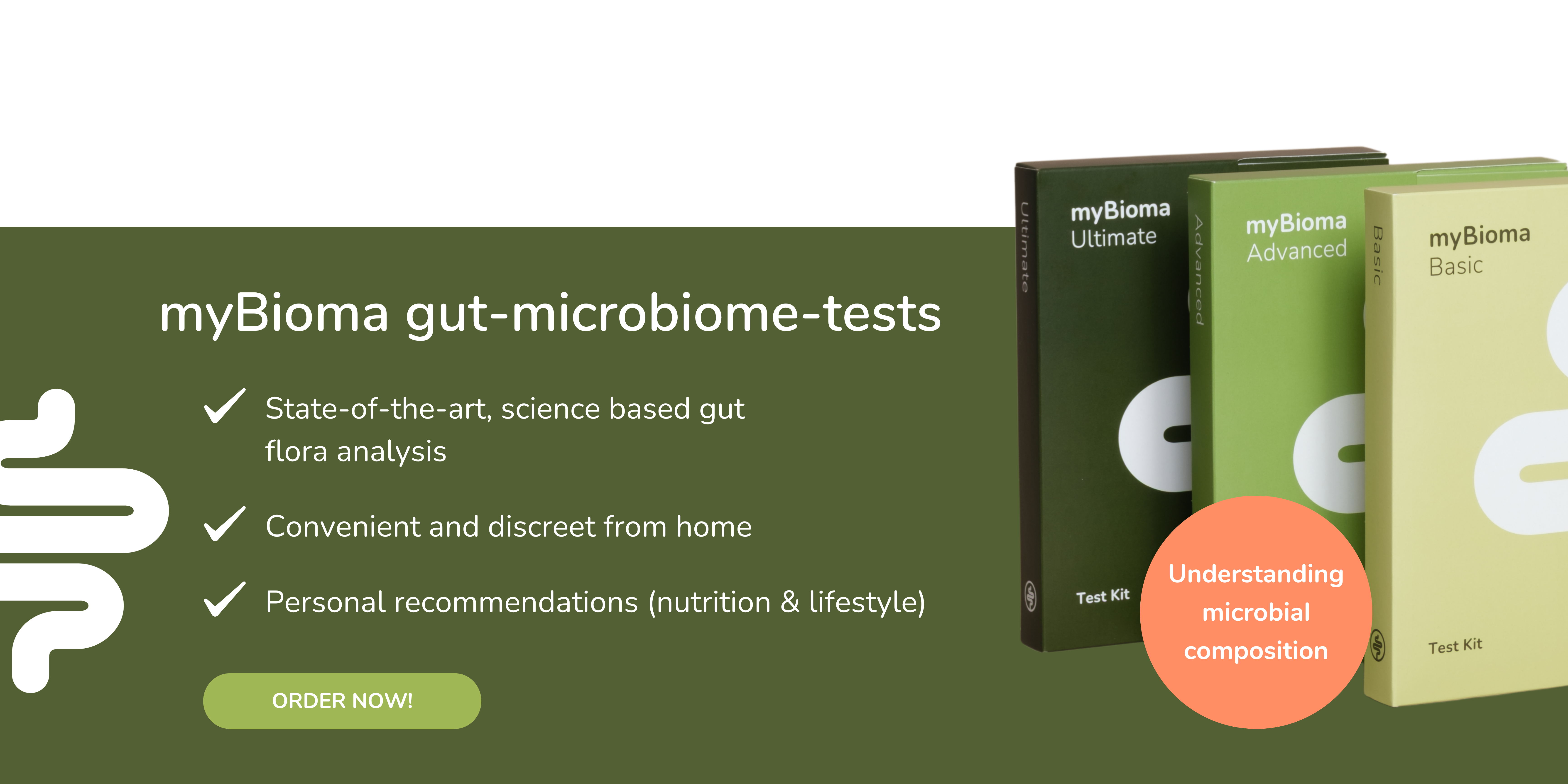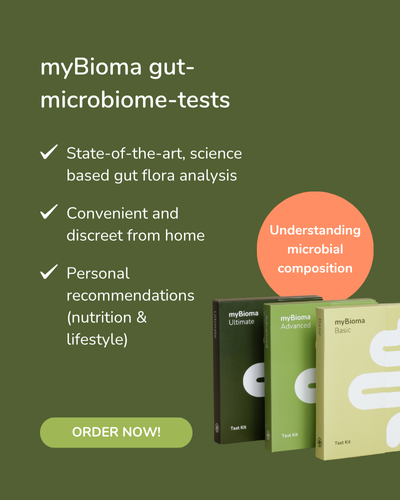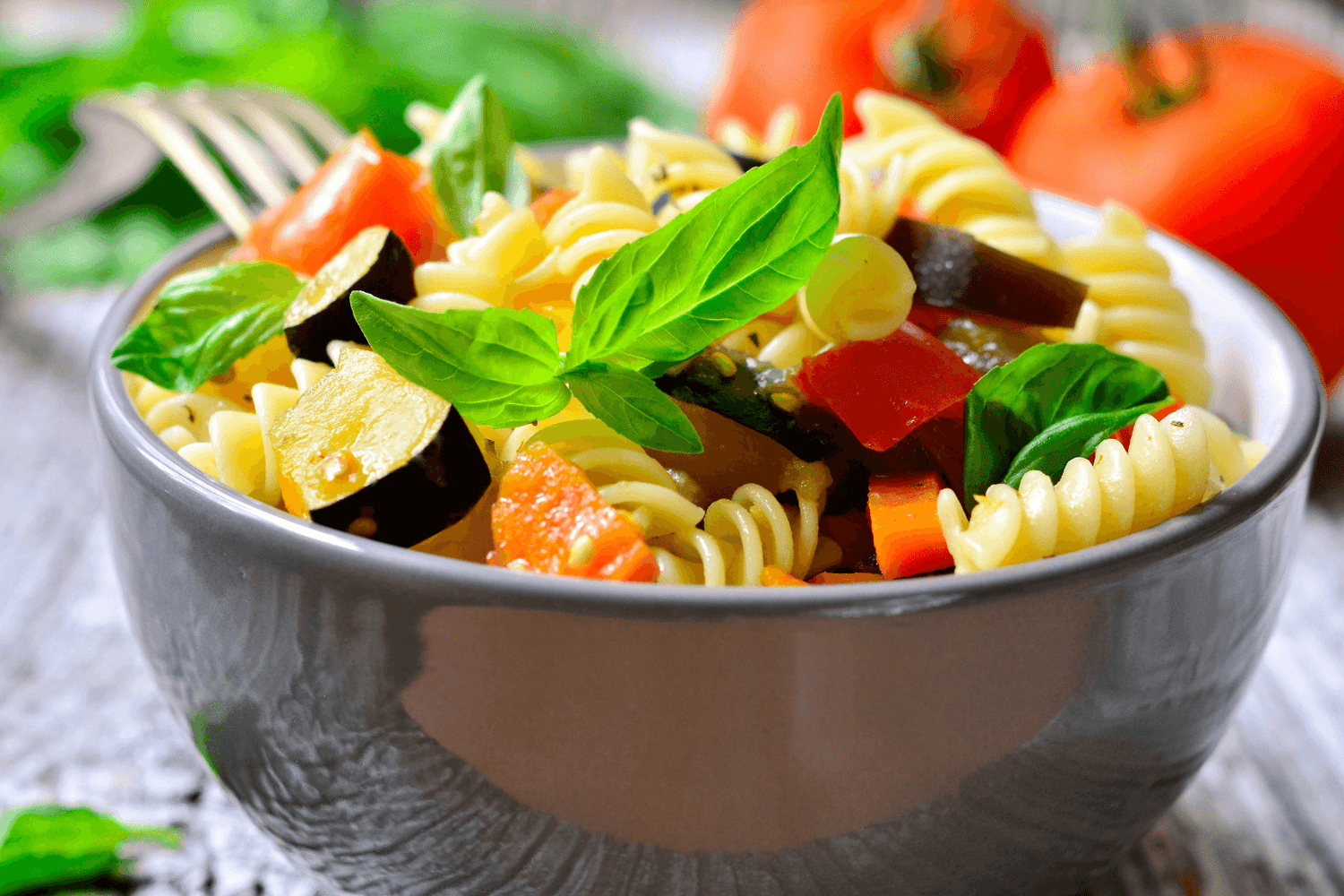What is SIBO?
SIBO (Small Intestinal Bacterial Overgrowth) is a condition where bacteria, normally found in the large intestine, overpopulate the small intestine. These bacteria ferment carbohydrates from food, producing gas. When this process mistakenly happens in the small intestine, it leads to symptoms such as bloating and flatulence (1).
How does SIBO develop?
Various changes in the digestive system can lead to an excessive buildup of bacteria in the small intestine. The most common causes of SIBO include the following factors (1,2):
- Anatomical changes in the gastrointestinal tract: Diseases such as small intestinal diverticulosis or operations that alter the gastrointestinal tract can lead to food building up in the small intestine. This creates favorable conditions for bacteria to multiply there.
- Impaired ileocecal valve function: This valve normally prevents backflow from the large intestine into the small intestine. If this mechanism does not work properly (for example, after surgery or due to anatomical disorders), bacteria from the large intestine can enter the small intestine and cause SIBO.
- Disturbance of intestinal motility: Certain diseases, such as diabetes, systemic sclerosis, hypothyroidism or eating disorders, can cause the intestine to move slowly or irregularly. Its "self-cleaning" function is thus limited and bacteria can easily accumulate and multiply.
- Too little digestive juices: Stomach and bile acids help to kill unwanted bacteria from food. If the body does not produce enough digestive juices, the bacteria can overgrow in the small intestine.
- Weakened immune system: If the immune system in the intestine is limited in its function, unwanted bacteria cannot be effectively combated.
Inside the gut: A behind-the-scenes look at how your body digests food
1. Small intestine
The primary role of the small intestine is to digest nutrients and absorb them into the bloodstream through the intestinal lining. This process is aided by gastric acid, bile, pancreatic enzymes, and the rhythmic contractions of the intestine (peristalsis), which not only support digestion but also help eliminate harmful microorganisms. As a result, the small intestine typically contains very few bacteria.
2. Ileocecal valve
Also known as the Bauhin's valve, it is located at the junction between the small intestine and the large intestine. Its function is to ensure that food moves in the correct direction - from the small intestine to the large intestine - and to prevent backflow. If this mechanism fails, bacteria from the large intestine can enter the small intestine.
3. Colon
All food components that are not digested in the small intestine move into the large intestine. Here, water and electrolytes are absorbed from the food residue, and stool is formed for excretion. The large intestine is also home to the majority of your gut microbiome, consisting of trillions of bacteria. These bacteria break down indigestible components, like fiber, and convert them into beneficial substances such as short-chain fatty acids. They are also involved in the production of some vitamins and hormones and have an influence on digestion, psychological health, metabolic health, fitness and skin health .

A balanced variety of bacteria in the large intestine is essential for your health and well-being. However, if these bacteria migrate to the small intestine, they ferment food components instead of allowing them to be absorbed into the body. You can learn more about the potential consequences below. If you're interested in discovering more about the complexities of your digestion, check out this blog article: How does our digestion actually work?
What are the symptoms of SIBO?
The most common symptom of SIBO is bloating, but it can also cause abdominal cramps, nausea, flatulence, diarrhea, or constipation. In severe cases, nutrient absorption may be compromised, leading to deficiencies, especially in vitamin B12 and iron. Impaired fat digestion can result in fatty stools and deficiencies in fat-soluble vitamins A, D, E, and K. Over time, this can lead to malnutrition, weight loss, and damage to the intestinal lining.
Unfortunately, no symptoms are uniquely indicative of SIBO, as they often overlap with other conditions like irritable bowel syndrome (IBS), functional diarrhea, functional dyspepsia, or flatulence. Many IBS patients also appear to have SIBO, though the exact relationship between the two is not fully understood (1).
In addition to functional digestive disorders, there are several other diseases with which SIBO often occurs together. These include inflammatory bowel diseases such as Crohn's disease, celiac disease, obesity, metabolic syndrome, diabetes, cirrhosis, non-alcoholic fatty liver disease, chronic pancreatitis, thyroid disease and cystic fibrosis (1,3).
How is SIBO diagnosed?
SIBO is usually diagnosed by a breath test or by examining a small intestinal fluid sample (2).
-
Hydrogen Breath Test: Patients consume a glucose or lactulose solution, which is normally absorbed quickly in the small intestine and enters the bloodstream. In SIBO, however, these sugars are fermented by bacteria in the small intestine, producing hydrogen gas. This hydrogen is then exhaled and can be measured. An elevated level of hydrogen in the breath suggests SIBO. While this test is easy to perform and non-invasive, its reliability can be limited, and false positive or false negative results may occur.
-
Small Intestine Aspirate and Fluid Culture: The gold standard for diagnosing SIBO involves an endoscopy, making it more invasive and costly than a breath test. During this procedure, a small amount of fluid is extracted from the small intestine and analyzed in the lab for bacterial presence. An increased bacterial count confirms SIBO.
- myBioma microbiome test: Although our microbiome test is not a diagnostic tool, we are able to draw conclusions about the possible presence of SIBO based on our research data and advanced AI algorithms.
Can a stool sample indicate SIBO?
Recent research has revealed that in SIBO, not only is the small intestine's microbiome altered, but differences can also be observed in the large intestine's microbiome. Several studies have diagnosed SIBO using breath tests and analyzed stool samples simultaneously, allowing researchers to identify differences between the intestinal microbiomes of SIBO patients and healthy individuals. Here are a few noteworthy findings:
- In a 2022 study by Maslennikov et al., increased levels of the bacterial strains Firmicutes and Fusobacteria, as well as the species Blautia, were found in SIBO patients. Conversely, the bacterial strain Bacteroidetes was less prevalent (4).
- In 2024, Lu et al. identified higher levels of the bacterial families Ruminococcaceae and Christensenellaceae, along with the genera Oscillospira and Butyricimonas, in the gut microbiome of SIBO patients (5).
- In 2020, Noh and Lee reported increased numbers of the genera Prevotella and Faecalibacterium, and decreased numbers of the species B. uniformis and B. adolescentis in SIBO patients (6).
Please note: While the studies provide intriguing insights, further research with larger participant groups is needed to confirm these findings.
At myBioma, we have also been able to identify correlations between the increased or decreased presence of certain bacterial groups and SIBO, thanks to our large microbiome database and advanced AI algorithms. This enables us, through our microbiome test, to provide indications of whether the bacterial composition in the stool sample suggests a possible SIBO condition.
Treatment options for SIBO
Medications
SIBO is primarily treated with specific antibiotics that target and reduce the unwanted bacterial overgrowth in the small intestine. However, without addressing the underlying cause, bacterial overgrowth often recurs (2). Additionally, antibiotics can also kill beneficial bacteria in the colon and lead to other side effects. Therefore, they should only be used following a thorough diagnosis and under a doctor's prescription.
Nutrition
A diet low in fiber, sugar alcohols (e.g. sorbitol, xylitol or maltitol), fermentable sweeteners (e.g. sucralose) and prebiotics (e.g. inulin) could help manage SIBO symptoms. These substances are fermented by bacteria in the small intestine and serve as food for them. The low-FODMAP diet, which is often used for irritable bowel syndrome (IBS), follows a similiar approach of reducing fermentable carbohydrates and could therefore also be useful for SIBO. However, the scientific evidence for this is not yet clear (1).
Another (slightly simpler) recommendation is to reduce the amount of carbohydrates (which include fiber) while increasing the amount of fat in your diet. Since gut bacteria mainly metabolize carbohydrates, you are depriving them of the food they need to survive (2). Carbohydrates include table sugar and sugary foods, fruit, starchy foods such as bread, pasta or rice, but also legumes such as lentils and beans, which are particularly rich in fiber.
Please note that fiber is absolutely essential for a healthy gut flora and that omitting entire food groups such as carbohydrates can lead to a lack of important nutrients and the development of various health conditions. Therefore, a so-called "restrictive diet" should only be followed for a limited period of time and only if there is a clear improvement in symptoms. We strongly recommend consulting with a nutritionist to find the most suitable diet for your needs.
References
- Pimentel M, Saad RJ, Long MD, Rao SSC. ACG Clinical Guideline: Small Intestinal Bacterial Overgrowth. Off J Am Coll Gastroenterol ACG. Februar 2020;115(2):165.
- MSD Manual Profi-Ausgabe [Internet]. [zitiert 24. Juni 2024]. Dünndarm-Bakterienüberwucherung (SIBO) - Gastrointestinale Erkrankungen. Verfügbar unter: https://www.msdmanuals.com/de/profi/gastrointestinale-erkrankungen/malabsorptionssyndrome/dünndarm-bakterienüberwucherung-sibo
- Efremova I, Maslennikov R, Poluektova E, Vasilieva E, Zharikov Y, Suslov A, u. a. Epidemiology of small intestinal bacterial overgrowth. World J Gastroenterol. 14. Juni 2023;29(22):3400–21.
- Maslennikov R, Ivashkin V, Efremova I, Poluektova E, Kudryavtseva A, Krasnov G. Gut dysbiosis and small intestinal bacterial overgrowth as independent forms of gut microbiota disorders in cirrhosis. World J Gastroenterol. 14. März 2022;28(10):1067–77.
- Lu S, Chen Y, Guo H, Liu Z, Du Y, Duan L. Differences in clinical manifestations and the fecal microbiome between irritable bowel syndrome and small intestinal bacterial overgrowth. Dig Liver Dis. 22. Juli 2024. Verfügbar unter: https://www.sciencedirect.com/science/article/pii/S1590865824008764
- Noh CK, Lee KJ. Fecal Microbiota Alterations and Small Intestinal Bacterial Overgrowth in Functional Abdominal Bloating/Distention. J Neurogastroenterol Motil. 30. September 2020;26(4):539–49.






